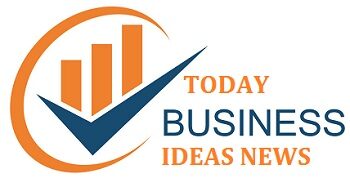The days of using punch clocks to keep track of time spent on various tasks are long gone. I remember my first job at a diner where we would clock in using an outdated system that punched holes into thin cards. Even though it was gratifying that those machines worked, everything about them was inefficient and inconvenient. Nowadays, small businesses face new challenges such as remote work options, flexible hours, compliance requirements, and efficiency gaps. In this article, we will discuss modern solutions to these problems while providing practical tips and drawing from personal journeys regarding time tracking in modern business operations.
Why Effective Time Tracking Is Imperative to Business Success
During challenging economic climates, companies often revert to old methods of managing people instead of focusing on achieving business goals. The punch clock metaphor exemplifies this by triggering images of bygone eras, such as with the Pomodoro technique, which, while not directly related to punch clocks, evokes a nostalgic sense of structured time management. In reality, though, small businesses looking to gain operational efficiency while improving profitability—from simple cafes to self-employed graphic design studios—find that measuring hours helps maintain optimal levels of fairness, sustained compliance, and achieving profit margins. Here are the most common mistakes made instead of stringent policies:
- Compliance with Labor Laws: According to the Fair Labor Standards Act (FLSA), punitive measures can be taken against small businesses that do not track overtime, potentially costing $500 in lost fines/costs. Accurate records are especially important when time measurement is maintained through properly managed electronic check clocks, as these businesses enjoy unrestrained flexibilities.
- Payroll Accuracy: Automated systems maintaining records can reduce errors, leading to less need for direct employee engagement and preventing costly mistakes. This ensures accurate payments, boosting employee morale and trust.
- Client Billing: Service-based businesses, such as consultants or legal firms, often maintain logs via manual entry. These rough copies can lead to honest mistakes by entering incorrect data, harming client relationships.
- Productivity Insights: Time tracking enables identification of areas where time is wasted during business hours, prompting workflow corrections. For example, a friend whose construction business revealed inefficiencies through a time estimation system shifted to streamlined processes.
The Move to Tech-Based Solutions
The days of using a physical time clock are long gone. We now have new technology that is inexpensive and serves the purpose of small to medium businesses, especially those with field or remote workers. Back when I began my journey as a freelance writer, managing time across several projects was very difficult. That’s when I discovered a time-tracking app for employees like the Controlio tool, which transformed my life.
A great example would be the Controlio tool, which offers features ranging from task tracking to productivity monitoring, making time management easy for employees. Unlike other systems, it is cloud-based, giving you the ease of accessing data anywhere, which is perfect for remote team managers or employees on the go.
Other solutions include
- Mobile Apps with GPS: Perfect for construction and delivery companies, these mobile applications capture where and when users clock in, providing much-needed accountability data.
- Biometric Systems: These systems allow facial or fingerprint recognition, making them ideal for on-site staff while offering affordability and high security.
- Project-Based Tracking: Software like Toggl and Timeneye allows users to break down hours by project, which helped me tremendously when dealing with multiple clients.
Managing the Remote Work Challenge
The pandemic accelerated the adoption of remote and hybrid work. Employees with remote and hybrid schedules require effective time-tracking systems. For instance, a former colleague who led a group of graphic designers on her team was continually frustrated by her inability to track their work hours, which resulted in unmet deadlines. Providing her with an online tracking system improved visibility into workflow so she could plan and manage tasks more effectively while enhancing team accountability.
Remote-friendly programs often include
- Active user list showing currently logged-in members.
- Monitoring of specified websites or applications (in a non-intrusive way).
- Automated syncing with timekeeping and payroll systems for enhanced efficiency.
Even small businesses, like bakeries or tech startups, can afford these advanced solutions.
Staying Compliant with Biometric Data
Modern time-and-attendance systems based on biometrics technology have revolutionized the workplace, but they require compliance by safeguarding biometric data like fingerprints and facial images garnered from employees, which is restricted by law in states like Illinois and New York. Businesses also need to protect this information against privacy violations, such as selling it for profit. I found this out when a friend’s retail store was fined for not properly informing workers about biometric data collection policies. Here’s how to be compliant:
- Compliance starts with guidelines being communicated effectively at workplace entry points.
- Employ robust methods of protecting sensitive information with encryption techniques.
- Review local privacy regulations regularly to prevent legal trouble down the line.
Final Note: While Embracing the Future, Keep It Easy
Just as the industrial revolution brought about evolutionary time-tracking solutions, today’s small businesses have sleek digital systems tailored to their needs. With tools like the Controlio tool, ensuring compliance with the Fair Labor Standards Act (FLSA), streamlining payroll processes, or boosting productivity becomes simpler than ever before. My own business experiences transitioning from physical staff attendance registers to automated records made managing operations a lot less stressful, revealing that adopting updated solutions always pays off immensely.
